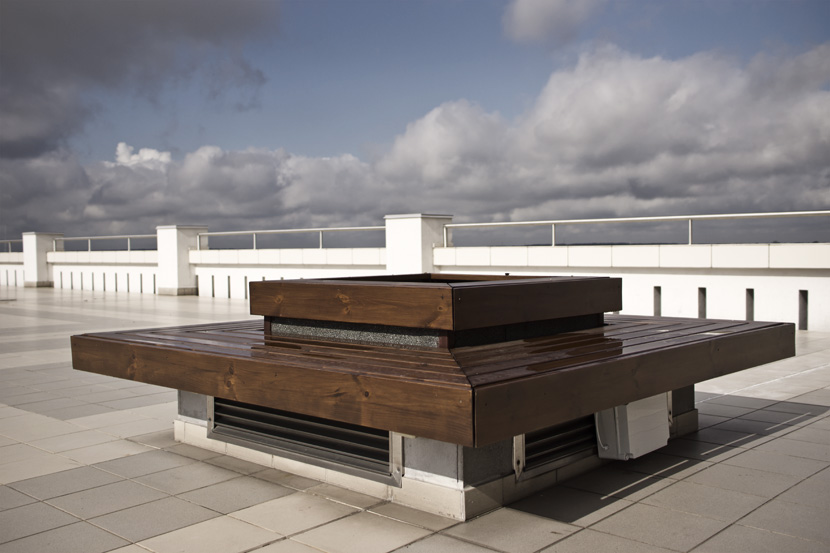055 Urban Songline (Static Generator) | Latitude: 54.902386° N – 54.902892° N / Longitude: 23.916612° E – 23.917294° E, 2017 – 11th Kaunas Biennial, Kaunas, Lithuania
Christ’s Resurrection Church, Sound installation
Žemaičių g. 31A, Kaunas
15.00-15.15
Church roof terrace
I-V 12.00-18.00
VI-VII 11.00-18.00
Curator Paulina Pukytė.
Artists: Adina, Manca Bajec, Karolina Freino, Allard van Hoorn, Jenny Kagan, Horst Hoheisel & Andreas Knitz, Jonas Oškinis & Raimundas Krukonis, Juozas Laivys, Dainius Liškevičius, Anton Lukoszevieze, Philip Miller, Tatzu Nishi, Paulina Pukytė, Juozas Zikaras
Kaunas has been occupied by many foreign entities since the times of Genghis Khan and those traces of many different occupants are visible everywhere in the city. The topic of the biennial investigates the ongoing conversation about (re-) placements of monuments that signify these changes. We discovered twenty-six tiles in Unity Square that neither belong to former Lenin Square nor to the new one; a kind of no-man’s land, void, liminal space or jammed urban space where special rules apply. On the other hand, research showed that twenty-six jamming towers controlled by twenty-six operators were continuously interfering with incoming transmissions like Radio Free Europe and Voice of America. During this Russian occupation that lasted until March 1990 a symbol of Lithuanian independence, the Resurrection Church that had been in the making since 1926, was occupied and used as a radio-factory and possibly as one of the twenty-six jamming stations whilst its design resembles an art-deco radio itself. This place for me took on an awkward energy looking at all these elements combined. During the biennial, a sound-piece using historic recordings of jammed western signals, different forms of static and recordings from regional so-called number stations is played over the church’s intercom system every day at 3pm.
__________________________________________________
Christ’s Resurrection Church in Kaunas, an impressive specimen of modernist architecture, was conceived in the 1920s as a monument to the resurrection of the Lithuanian nation and the regained independence of the Lithuanian state. The idea attracted criticism on the grounds that a monument to Independence should be for all, without emphasis on one religion, language or political views. After a lot of modifications the project went ahead, however, the construction was not finished before Soviet Russia occupied Lithuania, and only reached completion after the Independence of 1990. During the Soviet occupation the building was turned into a radio factory. At the same time the Soviets installed 26 jamming masts in Kaunas alone to disrupt incoming radio-signals from the West and to stop the stations like Voice of America and Radio Free Europe broadcasting to the occupied people of Eastern Europe.
The Resurrection Church building itself looks like an Art Deco radio, a stern, boxy grid of modernist lines. For the duration of the 11th Kaunas Biennial, Allard van Hoorn turns the Church into half radio, half jamming tower, disrupting its monumental purity with his sound intervention of ‘no signal’ static, jammed signal, and other idiosyncratic radio phenomena as a reminder of the fragility of freedom – freedom of speech in particular.
Text by Paulina Pukytė
__________________________________________________
Part of the project Urban Songlines, a utopian/dystopian series of collaborative translations of buildings, urban structures and public spaces into music through site-specific sound-generation. These performances are a way of connecting to places by listening to them as well as a research into how we use and experience the public domain and to what degree we can claim ownership over it, discussing notions of inclusion, becoming and belonging.
Listen
055 Urban Songline is made possible with generous support from the Mondriaan Fund


